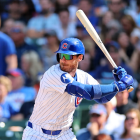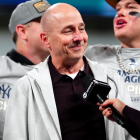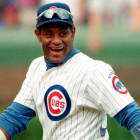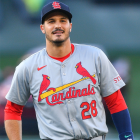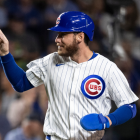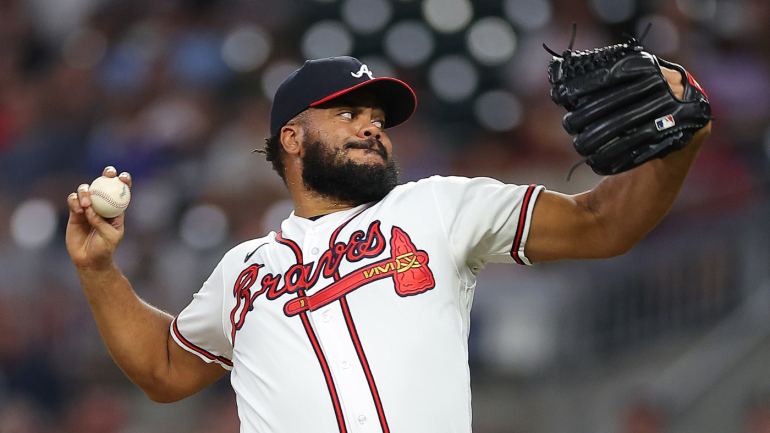
Relievers dominate late in games and they are dominating the early days of free agency. Six free agents have signed major league contracts since the World Series ended last weekend and four are relievers. Dodgers legend Clayton Kershaw and journeyman starter José Ureña are the two others. Here are the four reliever contracts:
- Edwin Díaz, Mets: 5 years and $102 million
- Robert Suarez, Padres: 4 year and $46 million
- Rafael Montero, Astros: 3 years and $34.5 million
- Nick Anderson, Rays: 1 year and $875,000 (split contract)
Anderson has appeared in only six big league games the last two years (none in 2022) and is a lottery ticket at this point, hence the small contract. The other three signed hefty contracts to return to their teams and will be among the sport's highest paid relievers in 2023. Díaz's contract set reliever records for total guarantee and average annual value ($20.4 million).
These large reliever contracts suggest the way teams value bullpen arms is shifting. In the early 2000s, even middle relievers were making big bucks, and a lot of those contracts blew up spectacularly. Then in the 2010s, teams moved away from high priced relievers, with only the best of the best (think Aroldis Chapman, Craig Kimbrel, etc.) making significant money.
For a period of several years, the "smart" way to build a bullpen was to hoard as many cheap bat-missers as possible, and cycle through them until you found the right mix. Relievers are notoriously volatile, even the very best can be up and down, so why spend a lot of money on such an unpredictable position? Teams valued flexibility and steered clear of large reliever contracts.
Now the pendulum appears to be swinging back in the other direction. It's not just Díaz and Suarez and Montero this offseason. Last offseason, Raisel Iglesias got four years and $58 million and Ryan Pressly signed a $15 million-a-year extension. The offseason before that, Liam Hendriks received three years and $54 million. Already nine relievers are locked in at $9-million-plus salaries in 2023.
There are several reasons for this, potentially. First and foremost, teams have way more information than ever before. They know everything about every pitcher's arsenal. Not just the velocity and spin either. They know the angle it passes through the zone, how one pitch plays off the other, etc. When you have this much information, you can make more informed decisions.
Injury prevention is another factor. Some (not all) teams have gotten better at it. The Guardians are in a class by themselves here. They've lost the fewest games to injury each of the last two seasons. Pitching is inherently risky and there will always be some element of luck involved with keeping players healthy. You can do everything right and a guy could still get hurt. That's baseball.
Teams are getting better at injury prevention though, thanks in part to load management strategies and the fact they get real-time data when, say, a pitcher is losing arm speed or dropping his release point. Why did that idiot manager pull his starter at only 85 pitches when he was cruising? There's a decent chance the team sees signs of fatigue and is being proactive. That's why.
Also, relievers are just more important now. They're more important than they've ever been. Just look at the rate of five-inning starts the last five years (ignoring the short and bizarre 2020 pandemic season):
- 2022: 69.8 percent of all starts were at least five innings
- 2021: 65.5 percent
- 2019: 74.9 percent
- 2018: 74.4 percent
- 2017: 77.4 percent
Five innings is not a long start! At least not historically. Starters don't go five innings as often as they once did though, which puts more responsibility on the bullpen, thus making relievers more important. It's supply and demand. Relievers are more important because starters are pitch fewer innings, thus good relievers are more important, and they're being paid accordingly.
With reliever contracts on the rise, here are three free agent bullpeners who could cash in this winter, plus a quick look ahead to next offseason.
Can Kenley Jansen get two years this offseason? Now 35, he settled for a one-year deal worth $16 million last offseason and was very good overall (though there were some hiccups along the way). Jansen is the best unsigned free agent reliever and there is never a shortage of teams looking for late-inning bullpen help. A team looking to push for an expanded postseason spot could separate themselves in the bidding with a second guaranteed year.
His career-long issues with lefties can get him into trouble in the three-batter minimum era, but Adam Ottavino has been a trusted high-leverage reliever on a postseason team each of the last five seasons. He annihilates righties and is also very durable, ranking second among all pitchers in relief appearances since 2018. Ottavino turns 37 later this month and that will likely limit him to a one-year contract, but the current market could boost his salary a bit.
Taylor Rogers had a rocky 2022, which included two trades in less than four months, but lefties who strike out more than 30 percent of the batters they face and consistently miss barrels are always in demand. Rogers has done that four years running now and is the same age as Montero and Suárez. Suddenly three years at north of $8 million a pop doesn't seem farfetched.
All these big reliever contracts put Josh Hader in position to cash in massively next offseason. He struggled badly for a few weeks this summer, there's no denying that, but he rebounded late and was dominant in the postseason, and a typical Hader season in 2023 would set him up for a monster free agent payday. Hader will be only 29 when he hits the open market and he could challenge Díaz's record contract. No pitcher who is a free agent now or is scheduled to become a free agent next offseason figures to benefit more from the rise in reliever contracts than Hader.


















